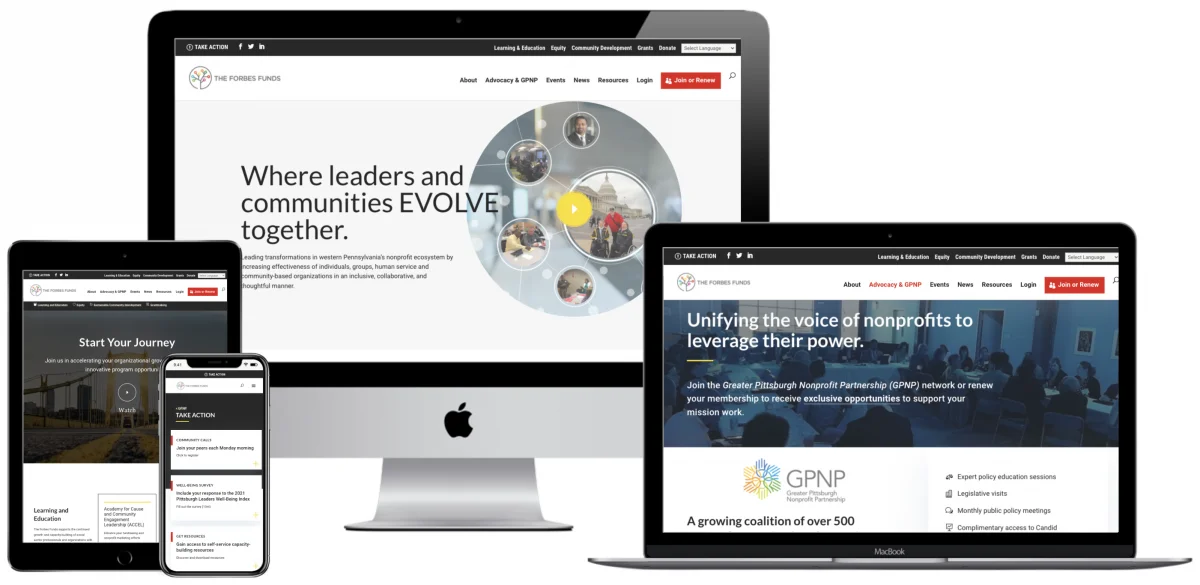With the constant exponential evolution of technology, media, and consumer behavior – the marketing landscape has kept progressively advancing – rewarding innovative companies and ushering in the Age of Assistance, as Google coins it. This recent piece by Google touches on the future applications of marketing technology and the ever-increasing rate of the spread of innovation.
Innovation as a Necessity
2020 is around the corner. Why is this important? It’s not.
2020 is an arbitrary, anchor year which marks our internal calendars for an elevated level of change.
It’s far enough into the future whereby current marketing and applications of technology have been executed and implemented – with real, measurable results – achieved in large part due to enhanced usability and utility.
As change grows at the fastest rate its ever grown, the status quo is no longer acceptable by any means. Couple this with the ongoing Silver Tsunami where business owners are leaving as they near retirement, and you have a necessity for innovation.
So, what the heck is innovation anyway? Simply, innovation is a process by which we make change happen through the introduction of new ideas, products, and methods. What better way to make
Artificial Intelligence and Emerging Technologies
2020 is also around when I anticipate the widespread adoption of next-generation technologies – through machine learning – as seen with assistive voice technology.
Did you know that 50% of all searches 7 will be done via voice search by 2020? This is why optimizing for voice search, should be done today and not a year and change from now.
Read more: Voice Search Marketing: Are You Ready for the Future?
As a company, Key Medium is adopting voice user interface design principles – effectively optimizing for both Google Assistant and Amazon Alexa.
Recently, I came back from Austin at an advanced Alexa Developer workshop where I learned how to leverage the latest in voice user interface design: from tools (a command line interface greatly improves voice design flow) to voice design concepts and resources. I also got a chance to chat with Amazon’s senior voice designers; it was very informative and enlightening
How Leading Global Brands are Innovating Through Digital Experiences
The accelerating pace of innovation certainly ushers in a new era of communication and marketing. In his book, Winning the Story Wars, Jonah Sachs calls this era the “Digitorial Era”. Watch this short animated video describing the spread of ideas through compelling digital storytelling. Take Coca-Cola’s Content 2020 Initiative for example. It was created in 2011 and embodies elements of an integrated brand through compelling storytelling – with the idea of ‘liquid content’. This same principle will still be relevant in 2020 and beyond.
Also, check out Adidas’ 75X improvement in the effectiveness of their conversion rates with digital over television. They, too, are planning to be relevant not just today – but beyond 2020 – through an elevated level of innovative marketing programs.
Accelerating Change, the Spread of Innovation, and 2 Key Attributes of Successful Ideas
In his seminal work, Diffusion of Innovations, eminent American sociologist and research pioneer, Everett Rogers, identified the potential barriers to the adoption of innovation as “relative advantage, complexity, compatibility, trialability and observability.” Furthermore, Rogers states that these five attributes account for most of the variance (49-87%) in the rate of adoption of innovations.
In the research, he explains the significance of relative advantage and compatibility, establishing them as being particularly important in explaining rates of adoption. More about the 2 key attributes:
- Relative advantage refers to what your product does better than another product. In other words, the unique benefit to be derived from using your product.
- Compatibility, on the other hand, describes how innovation fits into the values, past experiences, and needs of potential adopters. Therefore, identifying aspects of compatibility and relative advantage can help teams identify their proposed solution’s feature gap and lead to more concrete thinking about feasibility in the long run, so their product can leap past any incumbent solution in the market.
These perceived attributes become critical benchmarks that a product needs to achieve to be worth building and selling.
Are You Ready for Change?
Change readiness describes how ready companies are for all sorts of disruption within their industries and organizations. How can some companies thrive, taking advantage of what the market brings while others often struggle? Now, that’s a great question.
To answer that, we must first know the four ways to determine an organization’s change readiness, which involves, according to the Harvard Business Review 5:
- Change Awareness
- Change Agility
- Change Reaction
- Change Mechanisms
Stay Relevant by Delivering Delightful Brand Experiences
So how can your organization deliver the best brand experiences? The simple answer to this is – with data. Use data to get to know your customers. Then, use technology to deliver relevant and personalized messaging and creative content across online and offline touchpoints.
This matters because “organizations with integrated marketing and advertising stacks are 47% more likely to be using audience-level data to personalize customer experience compared with marketers without fully integrated technologies.” 1
How else can you stay relevant? Deliver the best brand experiences and you are sure to stay relevant, weather, and even take advantage of change and disruptions in the industry.
Learn from Leading Organizations and Use Data-driven Insights for a Competitive Advantage
Another question I found to be incredibly relevant to my day-to-day goals of growing my business was how to align my values of speed and precision using a data-based, consumer-centric approach.
I personally welcome the enhancements to my everyday life, and this manifests into my work in web development, branding, and digital marketing.
As an individual, I am consuming mass amounts of insights published by innovation leaders – through various engineering, technology, design, and marketing blogs. I also consume audiobooks regularly and take notes to internally enable the information processing theory to gain as deep an understanding as possible (and to improve the encoding of knowledge). This helps me stay on my feet and enables me to see the current innovation landscape as innovation leaders from Google, Amazon, LinkedIn, Facebook, NNGroup and other industry-leaders do.
With this lens, I can apply data-driven insights into my process and wield an information advantage in certain industries and niches such as local government, nonprofit, and B2B2C.
So, how do leading organizations do it to achieve a competitive edge?
Successful organizations start with a business objective that’s supported with a robust data strategy. We’re seeing some of the best organizations groom data science teams who can apply big data – through machine learning – to solve business problems.
In fact, Bain research shows that leading companies are 3.2X more likely to have the right analytics talent embedded in marketing. 3
Always Propel Forward With Data
There’s so much more we can do with data – from making smarter business decisions, improving processes, and better understanding our customers. One thing is certain – the singular goal of propelling forward with people in mind and data to inform prospective innovations.
Here we Come 2020: the Precipice of the Next Mindstep?
As technology is accelerating at unprecedented levels, we are nearing what Dr. Gerald Hawkins termed as the next ‘mindstep’ at 2021. Prior mindsteps involved writing, mathematics, radio, and television.
We are at the fifth mindstep which he described in his book, ‘Mindsteps to the Cosmos’
The mindsteps… appear to have certain things in common – a new and unfolding human perspective, related inventions in the area of memes and communications, and a long formulative waiting period before the next mindstep comes along. None of the mindsteps can be said to have been truly anticipated, and most were resisted at the early stages. In looking to the future, we may equally be caught unawares. We may have to grapple with the presently inconceivable, with mind-stretching discoveries and concepts.
Sources and References:
- Econsultancy/Google, “The Customer Experience is Written in Data”, U.S. (n=677 marketing and measurement executives at companies with over $250M in revenues, primarily in North America; n=199 leading marketers who reported marketing significantly
exceeded top business goal in 2016, n=478 mainstream marketers (remainder of the sample), May 2017. - Google, 2018, Is your 2018 marketing strategy leading or lagging? by Karen Budell, Carrie Bloch
- Google, 2018, Transforming your business in the age of assistance by Matt Lawson
- That piece I mentioned that sparked the creation of this article from Think With Google is called
‘Is your 2018 marketing strategy leading or lagging?’ - https://hbr.org/2010/06/four-ways-to-know-whether-you
- https://www.uxmatters.com/mt/archives/2018/03/7-questions-to-ask-users-early-in-the-product-lifecycle.php
- comscore

Ali Jaffar has been building dazzling websites and creating amazing online experiences for over a decade. His mastery of the latest innovations in web development results in world-class website experiences set apart by show-stopping style and seamless functionality. A sought-after consultant and 50-time award-winning storyteller, UX expert, and web developer — Ali lends his talents to build and bolster digital experiences for a wide array of clients — with a keen focus on web design for nonprofit organizations, B2B, and government agencies. When Ali’s not helping his clients grow or providing pro bono services via his Coding For Causes program, you can find him exploring beautiful open spaces with his dog, working on digital solutions like the Good Jobs Search Engine software, or doing yoga.
Connect with Ali on LinkedIn to continue the conversation, or follow him on Threads.
